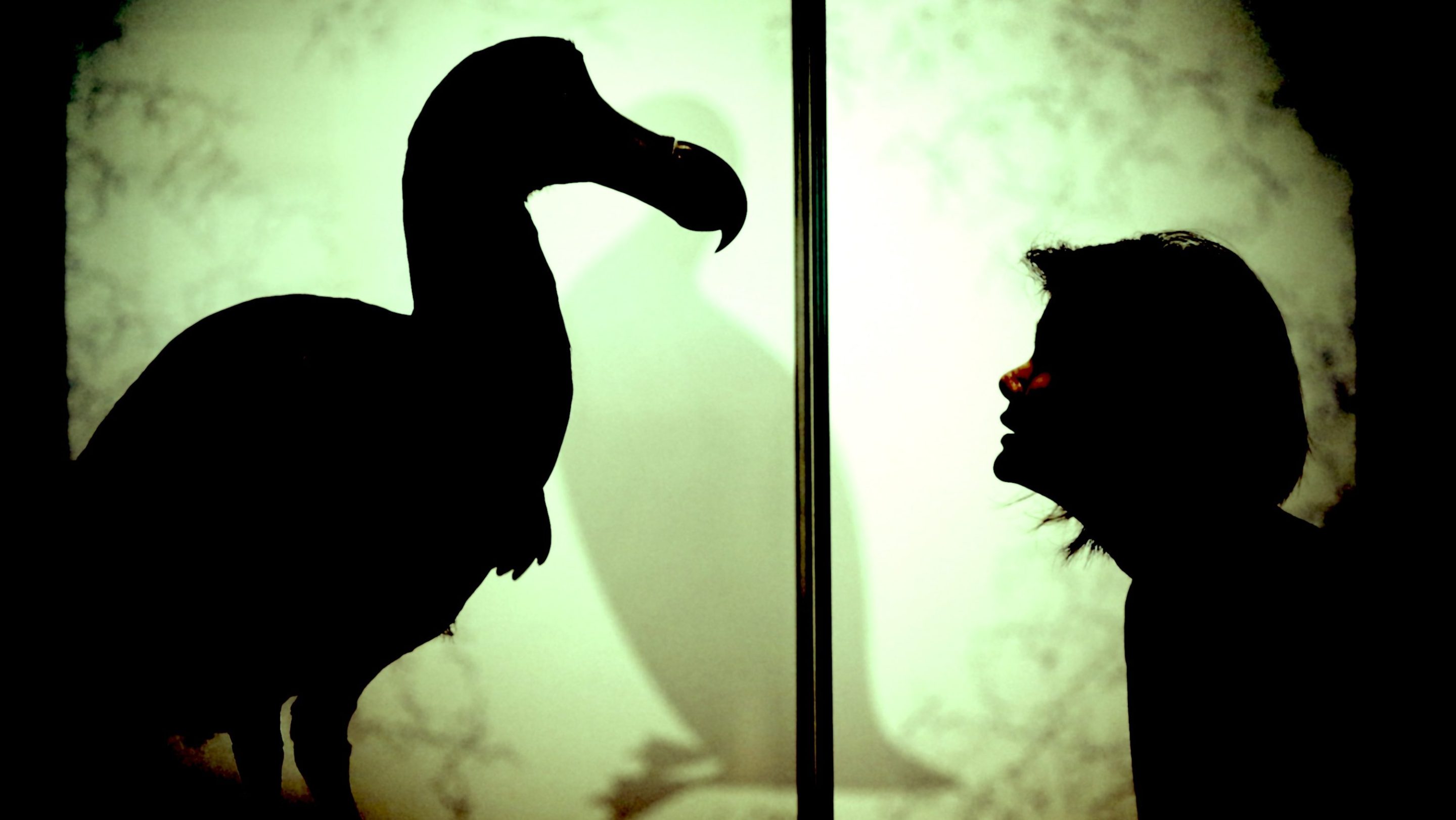You are wandering the forests of Mauritius, an oyster-shaped island east of Madagascar, when you spy a dodo, a bird famous for being as dead as one can possibly be. Yet this dodo waddles before you, pecking at fallen fruits and nuts with its bulbous beak, like a ghost whose reincarnation may in some way atone for the human sin of driving the species extinct in the first place. What if I told you that, for hundreds of millions of dollars, this future could be ours? Would you say it was worth it?
Before you answer, there are caveats. The dodo* may not be able to roam free and unbounded in its ancestral forests, where the invasive cats, rats, goats, pigs, and macaques that helped extinguish it in the first place will eagerly extinguish it once again. Barring some interventionist miracle of conservation, the bird would likely be placed in a large fenced enclosure or small, uninhabited island nearby Mauritius. As the asterisk implies, the dodo* wouldn't be a real dodo, in the strictest sense. It would be a genetic hybrid, a calculated reinterpretation of a dodo—ideally bearing some traits of its namesake but perhaps also those of the Nicobar pigeon, the dodo's closest living relative, whose cells will be manipulated to express the physical traits of the extinct species. A Nicobar pigeon in all its gothic iridescence is certainly beautiful, but it is not a dodo. And with no real dodos around to teach this new bird how to be a dodo, it may behave like a different bird. Is this dodo* worth it?
If taken at face value, de-extinction is a word that overpromises. It is not possible to reverse extinction and resurrect a dodo or a mammoth as they existed. It is possible to fashion a hybrid, an animal manipulated into being by genetically editing the desired traits of the lost species into the genome of a living relative. This proxy is the realistic dream of de-extinction. The term first entered public consciousness in the spring of 2013 after a series of TEDx Talks at National Geographic headquarters explored the idea of using DNA to bring species back from extinction, coinciding with the publication of a skeptical and measured feature. In the decade since, de-extinction has remained a fixture in the popular-science spotlight, enjoying press reserved for only the most audacious, best-funded research.
The buzziest company in the business of extinction is the venture-capital-funded Colossal Biosciences, which was founded by Harvard geneticist George Church and serial entrepreneur Ben Lamm and rakes in headlines whenever it announces its plans to bring back a new animal. (Colossal has yet to de-extinct an animal.) When Colossal launched in September 2021 with $15 million in private funding, its first target was the mammoth. By the time the company announced plans in August 2022 to bring back a striped Australian marsupial called the thylacine, it had amassed $75 million in private funding. In January 2023, the dodo joined the to-do list. Other organizations have entered the de-extinction game, such as the nonprofit Revive & Restore, but none have the resources and profile of Colossal, which has now raised $225 million in investment capital and is valued at $1.45 billion. It is the mammoth in the de-extinction race.
De-extinction proponents have assembled a profusion of scientific, ecological, cultural, and aesthetic arguments to support the project. Perhaps the most intoxicating argument for de-extinction is the moral one: Bringing back lost species could undo some of the unfathomable destruction people have wrought on the planet. By this logic, de-extinction becomes a feel-good, even heroic story, fulfilling our yearning for atonement. But as I see it, even the wildest, most ambitious promises of de-extinction do not really offer atonement, but instead a grand gesture—even if it works, it will not change the path of shortsighted greed that got us here, meaning a world where 1 million species are racing toward extinction, many in a matter of decades, according to a UN report from 2019. It cannot restore what has been lost, and overlooks all that we have left to lose.
De-extinction, at least defined as the resurrection of an exact genetic, physiological, and behavioral replica of an extinct species, is not possible. Scientists on either side of the debate all agree on this. But the casual reader could not be blamed for missing this technicality, considering the preponderance of images of incredibly authentic-looking mammoths, dodos, and thylacines that populate much of the coverage of de-extinction and Colossal's website.
De-extinction researchers have three primary methods by which to try to create these proxies. The first, back-breeding, is a form of selective breeding that aims to recover an extinct phenotype—meaning the proxy would resemble the extinct one physically, but not necessarily genetically. The most famous back-breeding experiment began in the 1920s as the Nazis rose to power in Germany. The brothers Heinz and Lutz Heck sought to recreate the extinct muscly cattle called the aurochs, in part to fulfill their vision of a mythic Aryan landscape. Their attempt failed by back-breeding standards, instead resulting in a hardy, aggressive cow. Most of these attempted aurochs died in the bombing of Berlin, but the descendants of those that survived were introduced in a rewilding project in the 1980s, and now the Tauros Program is attempting to back-breed better aurochs.
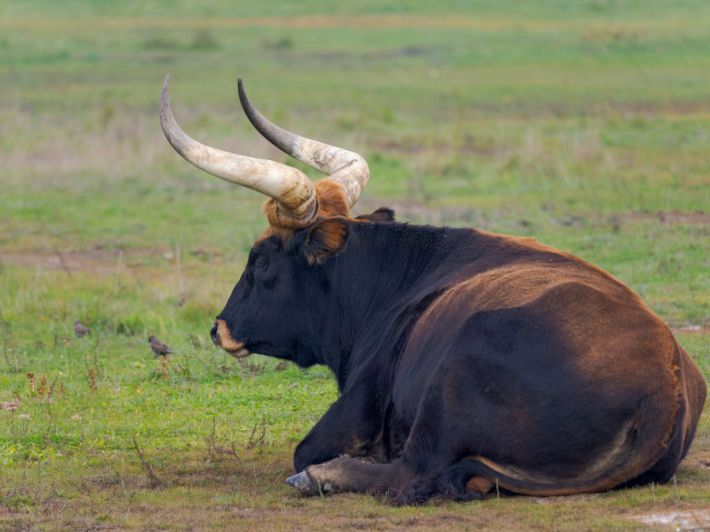
A second method is cloning in the form of somatic cell nuclear transfer, which is how scientists cloned Dolly the sheep in 1996. Cloning does create a genetically identical copy of the cloned creature but requires cells harvested from a living animal, which do not exist for most extinct species. So far, scientists have only successfully cloned living species, such as Dolly and Elizabeth Ann the black-footed ferret.
The third and most popular de-extinction approach is genetic engineering, in which scientists directly edit the genome of living species to take on characteristics of extinct ones. Although DNA survives in dead cells, it becomes increasingly fragmented over time. Recent technological advances mean scientists can extract these ancient DNA fragments and piece the slivers together—like trying to reassemble a document that has just gone through a paper shredder. This is how scientists have sequenced the genomes of extinct species. But this technique favors the cold and not the old, as hot and humid places do not preserve DNA well. The oldest recovered DNA is just 2 million years old. You may never be able to visit Jurassic Park, but this approach allows scientists to cobble together genomes of more recently extinct species, with the genomes of closely related living species as reference. Then scientists can place the edited genome into an egg cell of a related species to produce living cells that express extinct genes.
Since the first meetings at National Geographic, the long-dead faces of de-extinction are not necessarily the species that would be easiest to de-extinct. Instead, they are famous like mammoths, guilt trips like passenger pigeons or dodos, or a combination of both, like thylacines. But forget mammoths and other long-dead titans—how effective could de-extinction technology be when applied to a less charismatic but simpler, better preserved species? Given the best possible biological material, how close could scientists come to recreating a lost species?
In the eyes of some researchers, the best candidate for de-extinction is an animal some might wish were extinct: a rat. When Thomas Gilbert, a genomics researcher at the University of Copenhagen, sat in at some of the first de-extinction meetings at National Geographic in 2012, he remembers a brainstorm of what species the efforts should focus on. Suggestions of mammoths, Steller's sea cows, and woolly rhinos were all met with lots of attention. "Then I go, 'Christmas Island rat,' just to see what happens," Gilbert said. "And it was just like, dead silence."
A few years later, Gilbert, still thinking of the rat, had an idea. The creature seemed the perfect guinea pig for a test of the limits of de-extinction technology. The species had relatively well-preserved DNA, and he guessed the rat had diverged from its surviving relatives just a few million years ago—by comparison, mammoths and Asian elephants diverged around 5 million years ago. And the Christmas Island rat's close relative, the Norway brown rat, also happens to be a lab animal, meaning its genome has already been extensively sequenced and edited. So Gilbert and a team of researchers used computer models to reconstruct the Christmas Island rat's genome to see how close their proxy could get.
The researchers extracted DNA from two Christmas Island rat pelts collected at the turn of the 20th century and sequenced the samples over and over to retrieve the genome, according to their paper in Current Biology. Old and degraded DNA survives in short fragments, excluding the possibility of assembling the entire genome from scratch, or what is called a de novo assembly. Instead, the researchers mapped these small fragments onto the genome of the closely related Norway rat, from which the Christmas Island rat diverged about 2.3 million years ago, according to their estimate. This mapping is likely the only way to approach the genomes of many extinct species, Gilbert said.
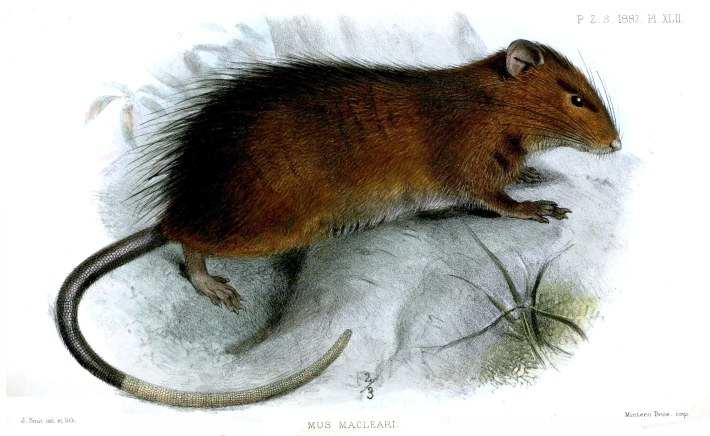
The reconstruction was patchy, and about five percent of the genome was unrecoverable. For 1,661 of the genes, the researchers only recovered about 90 percent of the sequence, meaning they could not fully reconstruct the original genes. And 26 genes were missing entirely. The researchers suggested they could recreate the Christmas Island rat's overall appearance, such as the rounded ears and thick black hair. But the missing parts of the genome contained important immune and olfactory genes that influence the rat's ability to forage, detect predators, or track down mates. Losing these genes would probably affect the recreated rat's ability to survive in the wild.
As Gilbert sees it, the point of this paper was not to be judgmental, but to show that it's possible to predict how good a proxy scientists would be able to make, "so people know what they could end up with," he said. "And decide if they are happy with that in light of resources invested."
If an exact replica is out of reach, what then becomes the goal? How close must a proxy be to the original species to earn the vaunted title of mammoth or dodo? "I have never done an interview in which I have answered this question in a way that satisfies the asker," Beth Shapiro, who co-directs the Paleogenomics Lab at the University of California at Santa Cruz and is the lead paleogeneticist at Colossal, wrote in an email. "I have also never done an interview in which I have not been asked this question."
Even if scientists could recreate and reconstruct a complete, identical genome of an extinct species, "this would still not be sufficient to bring back an exact replica of a species that is extinct," Shapiro said. But perfectly indistinguishable proxies are not the goal. "I think that Colossal has made clear on their website that the goal of the Mammoth project, for example, is to create an arctic adapted elephant," she said.
There is no strict, universal definition of how similar a proxy must be to be considered officially resurrected. The answers to these questions depend on why the creature is coming back. If the proxy is meant to live in a zoo and draw crowds, appearances might be enough. If the intention is to reintroduce a long-lost species into its former and perhaps deeply altered habitat in order to restore an ecosystem, then the proxy needs to be able to survive on its own. "If it's just, like, making a hairy elephant, maybe we can do that next year," said Gilbert, who is on Colossal's scientific advisory board. But in his opinion, "if it's an elephant that can live in the wild in the cold on its own, I would guess we're talking about decades, to be honest."
Shapiro acknowledges that there is no way to ensure everyone will readily accept an arctic adapted elephant as a mammoth. "If I can push back a bit, who cares?" she asked. Shapiro's motivation behind de-extinction is to fill a niche and restore ecological interactions that vanished with extinction. "For this, one only needs something that fits into that niche or that fills those ecological roles," she said. In this light, as long as a mammoth proxy acts like a mammoth—weathering the cold and adequately trampling the landscape to lock in permafrost—it doesn't really need to be one.
Gilbert's test of the limits of de-extinction technology was bloodless. It required just a few samples of old rat pelts and asked nothing from the living. But the physical process of bringing a species back to life is currently impossible without inducing some suffering in animals that are very much alive, both the mothers that will carry proxies to term and the proxies themselves.
Consider the clone of Celia, the only arguably successful de-extinction, who was born and died on a single summer's day in 2003. Celia was the last bucardo, a wild goat with gently curving horns that once roamed the Pyrenees before hunters drove the species to extinction. Several months before the original Celia was crushed to death by a falling tree in 2000, scientists had preserved some of her cells. They injected the nuclei of Celia's cells into domestic goat eggs that had been vacated of DNA, and then implanted the eggs into surrogate mothers. After 57 implantations and seven pregnancies, six ended in miscarriage. One mother, a hybrid between a goat and a Spanish ibex, carried Celia's clone to term in a caesarean section. As Carl Zimmer reported for National Geographic, the newborn bucardo "was struggling to take in air, her tongue jutting grotesquely out of her mouth." A necropsy revealed a malformed lung; she lived for 10 minutes.
"I don't disagree with the perspective that cloning historically was pretty archaic, and, you know, invasive," said Lamm, the co-founder and CEO of Colossal. He suggested that Colossal will be working with less invasive cloning techniques. "I know that there will be things that will be announced, and I know exactly when they'll be announced, that will change that perspective." Lamm also said that Colossal will make all the technologies it develops en route to de-extinction freely available for use by conservationists.

Announcement notwithstanding, there is no objective calculus of how many suffering creatures is "worth" one healthy one. Colossal plans to develop a proxy mammoth out of Asian elephants, which are endangered. The first genetically edited mammoth calves will be carried to full term by surrogate elephant mothers, Lamm said. An elephant cannot consent to becoming a surrogate mother for another species, a pregnancy likely to come with complications, as woolly mammoths are larger than Asian elephants. The evolutionary biologist Victoria Herridge pointed out that it is still common for captive elephants to experience labor issues and miscarriages, and caesarean sections are historically lethal for elephants. What is an elephant's understanding of a miscarriage?
Lamm points out that similar welfare questions surround some conservation programs that exist living species, such as the northern white rhino. "Should we not save a species or a subspecies if we have the capacity to do it?" he asked. An artificial womb would eliminate some of these ethical questions, but scientists have yet to develop an artificial womb that can carry a mammal through gestation. According to Lamm, Colossal has a 17-person artificial womb team working toward that goal. But as long as the artificial womb remains out of scientists' grasp, Lamm confirmed that elephant surrogate mothers will be the ones carrying the first mammoth calves. Elephant gestation takes nearly two years—a very long time in which things can go awry. If it took 57 implantations, seven pregnancies, and six miscarriages to produce one bucardo calf, how many Asian elephants will it take to carry a single mammoth calf to term?
Regardless of how we get there, let's say one perfect clone is born healthy and alive, and makes it to adulthood: an unequivocal de-extinction success. What would life look like for the only mammoth on the planet?
The last known individual of a species is known as an endling, and each is a tragedy. Many endlings are famous—Lonesome George, the last Galapagos tortoise, or Martha, the last passenger pigeon—not just for the loss they portend but also for living their final years utterly isolated from any of their kind. What might we call a de-extincted equivalent? A firstling? Such a creature would have nothing to mourn; no memories of other members of its species or social behaviors that no longer exist on this planet. A firstling would have no model to learn how to be a mammoth or a dodo or a thylacine. It would have no true parents. What is the quality of life of a social creature who is utterly, completely alone?
Surrogate parents could offer some early socialization, but there is a risk a creature like an elephant will reject her woolly newborn, unable to recognize it as one of her kind, as Dayton Martindale points out in a story for Vox about the ethical cost of de-extinction. Elephants are highly social animals that live in intimate matriarchal families and form lifelong attachments. Research suggests mammoths lived similarly social lives, and ideally the first-born calves would socialize alongside herds of modern elephants. But mammoth society and culture, like the creatures themselves, remain unknowable to us. No modern elephant knows how to survive in the Arctic. How will a newborn mammoth calf greet this alien new world?
Colossal is working to address these welfare issues, Lamm said. "We have an entire animal husbandry team," he said. "We have another project that we're funding and doing all the AI work ourselves to understand herd dynamics from rewilding of orphans," he added.

The ultimate dream of de-extinction is of course not a single mammoth but herds of them; not a lone dodo but whole populations, presumably doing whatever dodos of yore once did. The firstlings would have to grow up and reproduce before that could happen, meaning that earliest stages of de-extinction will comprise newborn proxies kept in captivity with no adults of their species to model what it means to survive freely in the wild. "They can be released, but I don't think they'll survive, to put it that way," Gilbert said.
Survival skills matter less if de-extinction's goal was just a new exhibit at the zoo, to raise money and public interest in conservation. A mammoth would not necessarily need to know how to mammoth if it lived in an enclosure or protected wildlife park, receiving food and assistance from keepers: a morally objectionable future but a more logistically feasible one. Captive mammoths, thylacines, and dodos would certainly conjure wonder and awe that is sorely needed to raise interest in conservation.
But this is not the end goal of de-extinction. Like Shapiro, most advocates say their real hope is to bring the species back into the wild to fulfill the ecological roles they long since vacated. "I don’t think anyone is excited about the idea of bringing species back or creating proxies for species so they can be kept in the zoo," Shapiro said. But the world and the wild have both changed drastically since the last days of the dodos, let alone the ice age of the mammoths. Colossal originally suggested their de-extincted mammoths could roam an experimental preserve in Siberia called Pleistocene Park, which, at 7.7 square miles, is much larger than a zoo. In theory, the mammoths' return could recreate the region's steppe ecosystems, trampling flora and uprooting trees to result in a land that absorbs less sunlight and heat, keeping the permafrost cooler for longer. But ancient mammoths migrated over tens of thousands of miles over the course of their lives, and the global climate has warmed significantly, about 10 degrees Fahrenheit, since the last Ice Age. More recently, Colossal has declared Alaska and Northern Canada to be new target "mammoth rewilding hubs."
Perhaps reintroducing a dodo to the forests of Mauritius might be more realistic. The birds were alive just a few centuries ago, so the climate would be no more shocking for the dodo than any other species tasked with adapting with anthropogenic climate change. But the invasive animals and plants that accelerated the dodo's extinction still swarm Mauritius today. "Virtually all native species that survive on Mauritius are on the decline towards extinction," F. B. Vincent Florens, an ecologist and conservation biologist at the University of Mauritius, wrote in an email. The island's highest conservation priority is controlling these species, which have choked out the native ecosystems that the island's endemic species, including the dodo, long relied on for survival.
In November, Colossal announced it was partnering with Mauritian Wildlife Foundation, a nonprofit based in Mauritius that works with the government. The nonprofit is considering locating the dodos in a national park on Mauritius with areas of restored forest, or two nature reserves located on small uninhabited islands near Mauritius, CNN reported. Lamm said Colossal will be contributing technologies, resources, and capital to the dodo rewilding efforts, and may raise additional funds. In this way, a de-extinction program can create new opportunities to invest in and raise money for local conservation. "I've had many ecologists and biologists from around the world call me, talk to me, telling me that we've brought more awareness to the biodiversity crisis through our de-extinction narratives and through some of the technologies that we've already developed than anything they've done in any campaign or celebrity in the last 10 years," Lamm said.
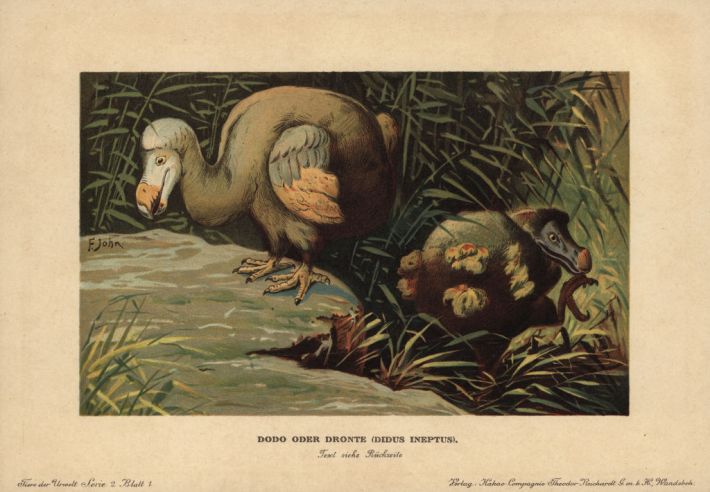
As a conservationist from Mauritius, Florens might seem like the target audience for a de-extincted dodo. But his feelings about the project are mixed. "I am afraid not much excites me about the creation of a pseudo-dodo," he said, adding that his biggest concern about the project is people conflating the recreation of the dodo with actual conservation action. Florens worries the vast financing required to create such a creature may drain funding from existing biodiversity and conservation programs targeting species that are threatened now, and accelerate their extinction. If Florens could reallocate the millions of dollars Colossal raised to de-extinct the dodo toward controlling invasive species on the island, he believes "this hemorrhage of species can certainly be stopped at a grand scale over the island."
But if the dodo were to be recreated from funds that never would have gone to biodiversity conservation in the first place, Florens believes the project "has a potential to become immensely beneficial to biodiversity." Restoring a habitat large enough for a viable population of birds as big as dodos would benefit the thousands of other species that dwell in the area, and even help stave off their decline toward extinction. "If the plan of 'dodo' creation can trigger that, then that would indeed be the true success of conservation for Mauritius," Florens said. "It would be by far the most impactful component of the whole project, provided it is really done."
If the de-extincted dodo is not for the people and researchers of Mauritius, who is it for? It is not for the birds themselves; they are long gone. The ecological arguments in favor of de-extincting a keystone species such as the mammoth—an ecosystem engineer that maintained ancient Arctic grasslands and preserved the permafrost—have far less relevance to the dodo. The dodo's de-extinction hinges on another kind of logic. "The dodo is going to have absolutely zero effect on the Mauritius ecosystem," Gilbert said. "I am willing to believe however that by recreating some kind of dodo form, there could be massive knock-on benefits that might benefit the ecosystem." The dodo might act as a beacon for Mauritian conservation, bringing investment and ecotourists to the island that may help preserve the remaining wild, he suggested.
Who is de-extinction for? As far as funding goes, it is for investors. These include venture capitalists like Winklevoss Capital and investors like Paris Hilton, who is an advisor for Colossal. It is for crypto entrepreneur Charles Hoskinson, who tweeted, "As a proud investor of @itscolossal, this animal means a lot. I've always wanted to eat a Dodo egg, and soon I'll have the chance." It is unclear if all these investors share Colossal's priorities of ecologically adapted proxies. What if these proxies fall aesthetically short of their ancient inspirations? A woolly mammoth, a creature with iconic, even otherworldly tusks, would be a ripe target for 21st-century poaching, so Colossal would consider engineering a tuskless mammoth if that helped the animals' resilience, Lamm said. Would Paris Hilton be happy with a tuskless, hairy elephant? What if Charles Hoskinson does not get to eat his dodo egg?
Other investors' rationale for funding Colossal raise questions. In-Q-Tel, a nonprofit venture capital firm funded by the CIA that invests in tech startups that "enhance and advance national security," recently invested in Colossal, according to The Intercept. Colossal is a for-profit company, after all, and it's only logical that some of the advances in biotechnology that will emerge during the path to de-extinction that could have other applications quite unrelated to conservation. What interest does the CIA have in biodiversity? "Strategically, it's less about the mammoths and more about the capability," senior employees of In-Q-Tel wrote in a blog post.
The most immediately useful outcomes of de-extinction will be in its side effects—knock-on discoveries that may help preserve what we actually have left in the world. "This is what I find most exciting about these projects," Shapiro said. Scientists currently do not have any real mechanism to perform gene editing in birds, despite the fact that birds are among the most endangered species in the world, she noted. "How amazing would it be if this opportunity fostered development of technologies that could be applied to saving the world many highly endangered birds?"
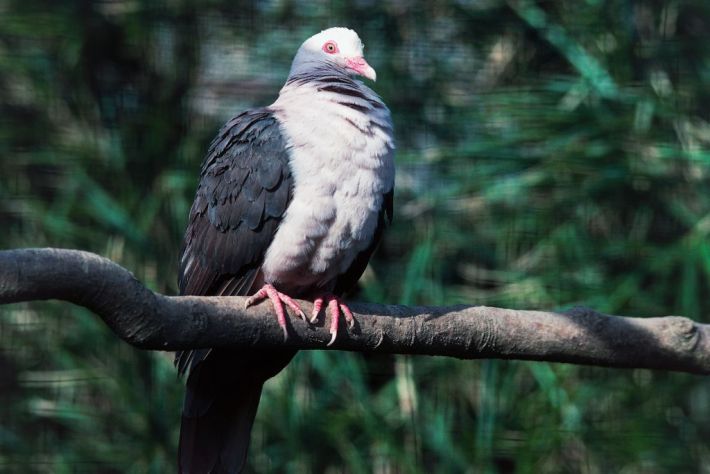
In these arenas, de-extinction companies have already made concrete, transparent progress. Colossal is currently funding research to develop a vaccine for elephant endotheliotropic herpes virus, or EEHV, which kills many young Asian elephants. Improving cloning technology will help inject needed genetic diversity into dwindling populations of endangered animals. And Revive & Restore has successfully cloned the highly endangered black-footed ferret. Perhaps this is the secretive real purpose of de-extinction: a shiny fundraising spectacle that enables innovations for living creatures, research that is vital but not sexy enough to tempt Paris Hilton or crypto billionaires.
I do not believe there is an objectively right choice to make about de-extinction, or any of the other shot-in-the-dark measures science may take to stave off the extinction crisis we have created. I can see how some view de-extinction as a distracting spectacle in a crisis and others as a rare instrument of hope. But after a year of thinking, writing, and reporting on the idea of de-extinction, I want to offer my opinion, which like any creature will continue to evolve.
I know de-extinction will happen whether we like it or not. Unless I get a direct line to Paris Hilton, I cannot ask her to invest in the less sexy practice of conservation of less sexy species: restoring prairies, releasing beavers, removing dams to support salmon. I suspect that Hilton would not invest in the resurrection of the Christmas Island rat. (Paris, if you're reading this, prove me wrong!) This lack of public interest is beyond Colossal's remit; they have raised hundreds of millions of dollars because of the spectacle of what they promise. I am genuinely hopeful for the advances in biotechnology that will ripple out from ongoing efforts toward de-extinction, and I have no doubt they will save lives and prevent future death.
But I dread the future de-extinction heralds, one where we pick and choose which species will be imperfectly reanimated, where the future of biodiversity is funded by venture capital, and where these proxy animals or even merely the promises of them make headlines while living animals' extinctions do not. If de-extinction is a technology of the future, it sets a depressing precedent where enormous scientific decisions are made by for-profit companies without consulting the general public, as Herridge, the evolutionary biologist, argued in an essay in Nature. I don't believe that de-extinction is for the mammoth, the thylacine, the dodo, or any other extinct species charismatic enough to have a chance at resurrection. De-extinction is a project for us. It is a stab at atonement, a very expensive settlement between us and evolutionary history that does not constitute real restitution.
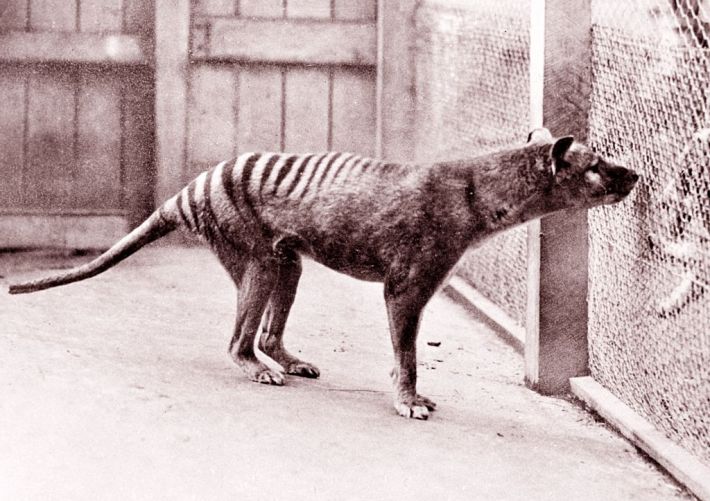
De-extinction promises not a true reversal of time but a selective one. It is the epitome of the incorrigible human belief that, with enough money, we can find an escape clause from the destruction we've wrought on the planet. "[De-extinction] may deodorize the stench of human-caused extinction to some extent," a group of researchers wrote in a special issue of the Hastings Center Report, adding that the excitement around the spectacle allows us to shirk our moral duty to life on Earth. And who could blame us? "Talk of resurrection will be interpreted as another heady opportunity for human ingenuity and the miracle of technology, which is always more attractive than the demanding existential effort of protecting and respecting life," they wrote.
If we reach a point where native ecosystems have been restored, conservation is abundantly and globally funded, governments have taken meaningful and equitable action against climate change, no species are endangered by our presence on the planet, and people no longer live in poverty that makes poaching a rhino horn or mammoth tusk a necessary trade-off for survival, then sure: Let the dodos* and mammoths* frolic. But in the world we live in, spending lots of money to inflict unknown degrees of suffering on living and dying animals in pursuit of creating hybrids that will require immense and expensive assistance to survive on their own amid vanishing wilds does not just seem misguided. It seems funereal.
In a 2013 TED Talk on de-extinction, the environmentalist Stewart Brand framed de-extinction not just as a solution to tragedy, but as an alternative to grief: "Don't mourn. Organize," he challenged. But why not both? In 2014, the anthropologist Deborah Bird Rose and the field philosopher Thom van Dooren argued that Brand's remarks misunderstood the nature of mourning, a transformative act in which we sit with our grief, come to terms with our changed reality, and imagine how we ourselves must change to face this new world. "Here, the bright promise of new technologies, of doing something, undermines the genuine reflection needed to get somewhere better—not just different," they wrote.
The public's fascination with de-extinction suggests a fundamental oversimplification about what makes a species. A species is more than a specific genome. It is inextricable from its ecology and behavior, the relationships it forms with predators, prey, and parasites, not to mention its own galaxy of microorganisms and the natural world it helps to shape. A species is not some final form but an ongoing lineage that spans billions of years of evolutionary time and will continue to evolve into the future. A species is an immense and incalculable inheritance. That legacy cannot be resuscitated.
This spring, in a tour of the zoological museum at the University of Wisconsin–Madison, I held the tooth of a mammoth and a mastodon, each so heavy I felt as if they pulled my bones into the earth. I saw a white drawer unfurl to reveal five of the 1,532 passenger pigeon skins that are preserved on this planet, feathers still pearlescent under the harsh archive lights. I had never come so close to the body of an extinct species before, and I expected I would be deeply moved, perhaps to tears. As my eyes trailed over the scaled feet sprouting limply from each dead pigeon, I did feel some inscrutable loss, rage, and guilt. I wracked my mind to try to imagine the passenger pigeon as it lived, in flocks so thick they blotted out the sun. But instead I was flooded with images of the living: the icy blue eyelids of the mourning dove that sits on my windowsill, her little freckles, her haunting coo. I could not conceptualize this dead bird, nor the world that disappeared with it. I felt then that the world of the mammoth, the passenger pigeon, and the dodo was long gone. Let their stories end. But let the stories of the living continue.
